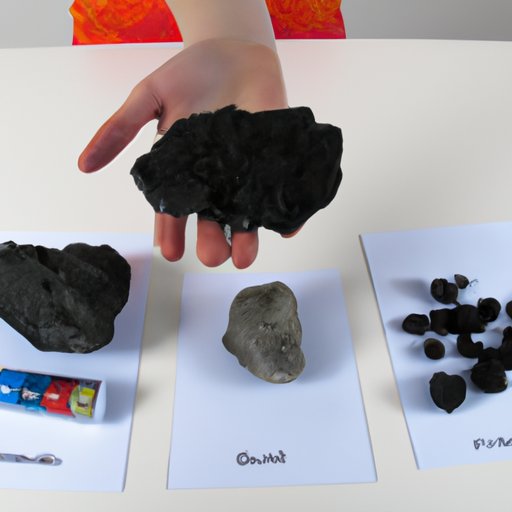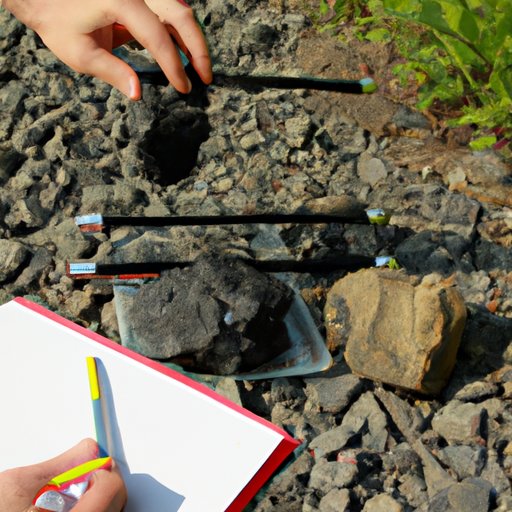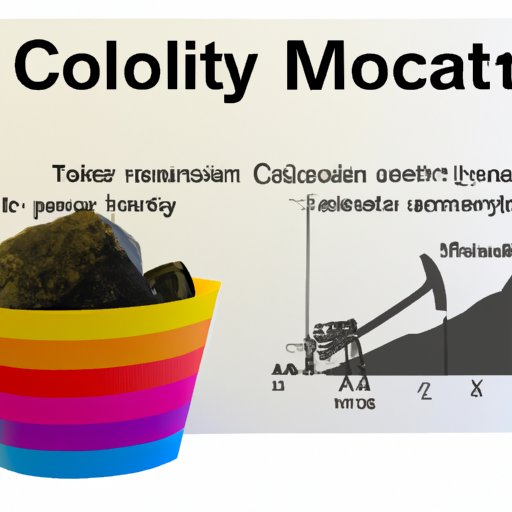Introduction
Coal and minerals are two naturally occurring substances that are often discussed together. However, there are significant differences between them in terms of their chemical, physical, and economic properties. This article will examine these differences and explain why coal is not considered a mineral.

Examining the Chemical and Physical Properties of Coal Compared to Minerals
The chemical and physical properties of coal and minerals vary greatly. Minerals are typically solid substances composed of atoms arranged in a specific way, while coal is an organic material made up of carbon, hydrogen, nitrogen, and sulfur. Coal also has a much lower density than most minerals, making it lighter and easier to transport.
In addition, minerals tend to have a crystalline structure, which gives them a higher degree of hardness and strength. By contrast, coal does not have a crystalline structure and is therefore softer and more brittle. Furthermore, minerals are usually non-combustible, while coal is combustible and can be used as a fuel source.
Exploring the Different Origins of Coal and Minerals
Coal and minerals have different origins. Coal is formed from organic matter such as plant material that has been buried and subjected to intense heat and pressure over millions of years. On the other hand, minerals are formed through geological processes such as volcanism and metamorphism.
For example, quartz is a mineral that is formed when silicon dioxide molecules are subjected to high temperatures and pressures. By contrast, anthracite coal is formed when plant material is heated and compressed over long periods of time.
Analyzing the Uses of Coal and Minerals
Coal and minerals have different uses. Coal is primarily used as a source of energy, either for electricity generation or for heating applications. It is also used in steel production and as a raw material for certain chemicals and plastics.
Minerals, on the other hand, are used in a variety of industries. They are used in construction materials such as concrete and asphalt, and in fertilizers and pesticides. They are also used in electronics, medicine, and many other products.

Investigating the Prevalence of Coal and Minerals in Nature
Coal and minerals can be found in different locations. Coal deposits are mainly located in North America, Europe, and Asia, while minerals can be found all over the world. For example, diamonds are found in South Africa, talc is found in the United States, and quartz is found in Brazil.

Evaluating the Economic Impact of Coal and Minerals
The economic importance of coal and minerals varies significantly. According to the World Coal Association, coal is the largest source of energy for electricity generation worldwide and accounts for around 40% of global electricity production. In addition, coal is a major source of income for many countries and is responsible for millions of jobs.
Minerals, on the other hand, are important for a variety of industries. For example, gold and silver are used in jewelry, copper is used in plumbing and electrical wiring, and iron ore is used in steel production. Minerals are also a key component of many consumer products, from smartphones to cars.
Conclusion
This article has examined the differences between coal and minerals in terms of their chemical, physical, and economic properties. While both substances are naturally occurring, coal is not considered a mineral due to its organic nature, low density, and combustible qualities. Coal is mainly used as a source of energy, while minerals are used in a variety of industries. The economic impact of coal and minerals also varies significantly, with coal being an important source of energy and minerals being essential components of many consumer products.
(Note: Is this article not meeting your expectations? Do you have knowledge or insights to share? Unlock new opportunities and expand your reach by joining our authors team. Click Registration to join us and share your expertise with our readers.)
